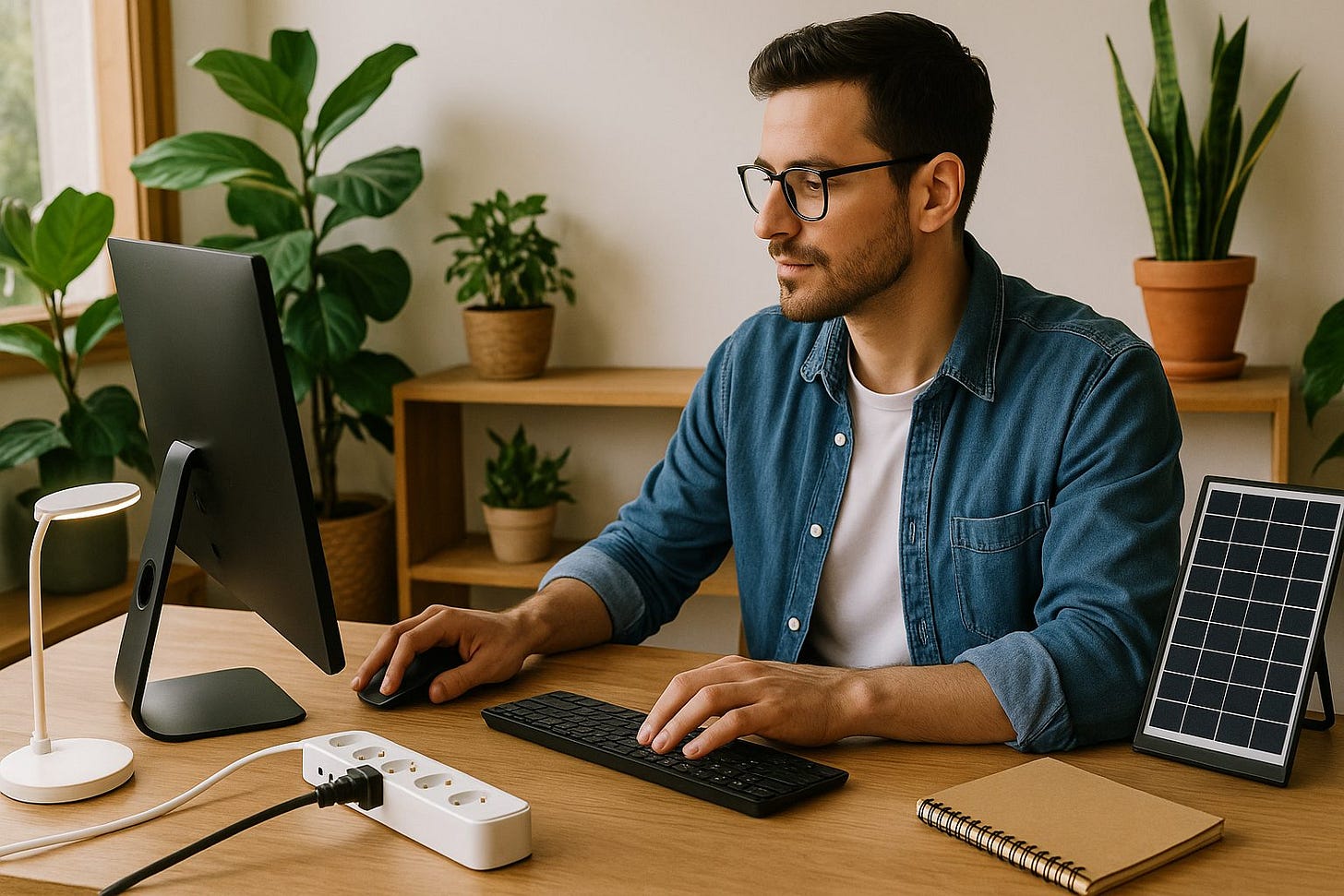5 Green Tech Tips That Make Your Work-From-Home Setup More Sustainable
The work‑from‑home lifestyle is here to stay—and with it comes the opportunity to rethink our tech habits. I think it's high time we stop treating our home office like a power‑guzzling black hole and instead turn it into a green sanctuary. Imagine a workspace that's just as efficient as your downtown HQ, but with zero commute emissions and a fraction of the energy footprint. Intrigued? You should be.
Let's dive into five green tech tips that are both smart and sustainably stylish. They're not gimmicks—they matter.
1. Embrace Smart Power Management
Your devices don't need to run 24/7. Absolutely not.
Adaptive energy saver on Windows 11 laptops automatically kicks in during light tasks like emailing or browsing, cutting energy waste without dimming your screen—available now in the Canary preview build.
Smart power strips shut off diverted devices in standby mode—notably printers, speakers, and monitors. According to Splunk, these strips can drastically reduce home office energy drain.
💡 Call to action: Plug your setup into a smart strip today and watch phantom power disappear. It's an easy win you'll notice in your bill.
Also read: 5 Easy Ways to Slash Your Energy Bill (And Carbon Footprint)
2. Upgrade to LED & Smart Lighting
Don't underestimate the humble lightbulb—it's an eco powerhouse.
LED bulbs use up to 85% less energy than CFLs and last decades longer.
Daylight‑harvesting and occupancy sensors adjust lighting based on ambient light and presence, trimming office lighting energy by as much as 80% in some smart systems.
Stylish, eco-friendly, and energy-smart? Yes.
3. Go Solar with Your Gadgets
Why not harness the sun while working?
Solar‑powered peripherals—from headphones to window sensors—are gaining traction. Companies like Exeger embed solar cells (Powerfoyle) into everyday devices, with more options expected under $100.
Even just a solar‑powered mousepad or lamp keeps your kit juiced with zero grid strain.
Related: 6 Clever Ways to Cut Your Water Use With Smart Tech
4. Opt for Refurbished, Modular Tech
The greenest gadget is often the one you already have—but if you need to upgrade…
Circular Computing's remanufactured laptops come with BSI Kitemark certification, cutting ~316 kg CO₂ per device and saving precious water and minerals.
Green computing principles emphasize extending device lifespans via upgrades, modular components, and cloud optimization to avoid creating new hardware.
Tech-savvy, eco-conscious—and probably cheaper too.
5. Automate Climate Control & Monitoring
Think about your HVAC and home climate—yes, even for your WFH corner.
Smart thermostats and home automation platforms let you schedule heating/cooling only when you're working, saving as much as 10% on HVAC costs.
IoT sensors for temperature, humidity, and occupancy can dynamically manage your comfort—just like in a commercial office.
Put simply: only heat and cool what you use. The planet (and your wallet) will thank you.
Bonus Tip: Passivity Is Power
Technology's great—but don't forget passive design.
Evaporative bricks, 3‑D printed ceramic units—like "Cool Bricks"—use ancient evaporative cooling to reduce indoor temps. Not ideal for humid climates, but brilliant in drier ones.
Thermal insulated curtains, plants, natural light, indoor airflow—they're not flashy, but they profoundly cut HVAC use.
Combine tech and tradition. Win-win.
Why It Matters
Home offices often consume far more energy per square foot than commercial buildings due to poor insulation, independent HVAC, and less efficient equipment. But smart solutions are leveling the playing field:
Save money—lower utility bills, lower carbon bills.
Boost productivity—a well-lit, comfortable, tech-savvy workspace sparks creativity.
Walk the talk—show clients, colleagues, and yourself that sustainability isn't just buzzword branding—it's practice.
Your Green Tech Blueprint
Here's a quick-to-action guide:
Enable adaptive energy saver (Windows) + smart power strip.
Swap bulbs for LEDs; add occupancy and ambient light sensors.
Use solar-powered tech for small peripherals.
Choose remanufactured/modular devices or upgrade what you've got.
Automate heating, cooling, and climate with smart sensors and thermostats.
Incorporate passive cooling and insulation.
Over to You
Which tip hit home hardest?
Start small—swap a bulb or add a smart strip. Or go all in and retrofit your space. Either path makes a difference.
Share your journey! I'd love to see photos, hear about your savings, or debate which gadget deserves the green crown. Let's grow this sustainable WFH movement—together. 🌱


